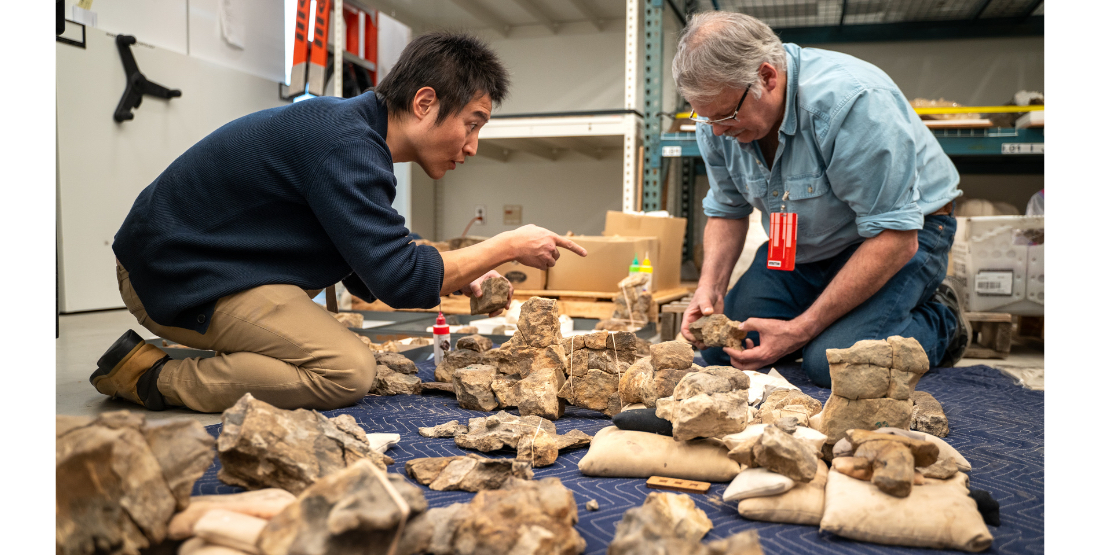Cheng-Hsiu Tsai & James Goedert
What kinds of things were you looking at and documenting with the Burke collections?
On this trip in January, James and I were trying to reassemble a fossil whale (collected by Jim and others from Washington State in 1999). The specimen includes hundreds if not thousands of pieces, and this whale has essentially been sitting in the Burke drawers for more than two decades. Without putting different pieces back together, it is indeed difficult to tell its significance.
What is something fun or unexpected that happened to you during your visit to the Burke?
It is not only fun but extremely rewarding when we are getting to see what and how this whale looks like. The reassembling remains unfinished, and James and I will do a bit more later this year (more likely in August). But, after our initial trials, we were able to see more features of this whale that allowed us to run some analyses. The results are so unexpected and can significantly rewrite our understanding of whale evolution. I guess I should not say too much at this stage, and James and I plan to finalize this project and submit it next year.




